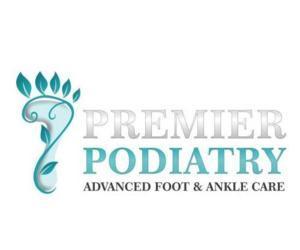“Is there an effective way to remove and prevent corns?”
I get painful corns on my feet. Is there something I can do to prevent and remove them? What usually causes corns to form?
15 Answers
Podiatrist(FootandAnkleSpecialist)CornsandCalluses
Yes you can prevent corns. Corns form, usually on to of toes, due to constant friction on the toe joints from shoes. It is common in those with hammertoes, or crooked curled toes. They can be prevented by wearing proper sized shoes with enough room in the toebox to spread toes out and wiggle toes up and down.
THE REMOVING IS NOT TH E PROBLEM, IS THE PREVENTION, THERE ARE MANY FACTOR THAT CREATE CORNS, THE SHOES YOU WERE, THE POSITION OF OF FEET, THE WAY YOU WALK, NOT A SIMPLE ANSWER, YOU SHOULD GO TO A PODIATRIST
There are many causes of corns such as bone spurs, poorly fitting shoes,fungal infections, plugged sweat glands, etc. The treatment depends on the cause. Best plan is to go to a podiatrist for an examination and possibly x-rays to determine the cause and develop a treatment plan.
Kathleen Neuhoff, dPM
Kathleen Neuhoff, dPM
Prevention is the way to go. Corns are caused from pressure and friction. Your body tries to protect you by forming hard skin. Buy wider and deeper shoes.
Corns are due to your bodies response to excessive friction. The corn hardens the skin in that area. Corns form due to pressure on the skin.
Almost all corns will slowly fade away once you remove the source of friction that is causing it. It is important to purchase shoes with plenty of room and that are not cramped in the toes. Fit your shoes at the end of the day when you feet are their largest.
Once the source of friction has been removed, it is important to keep the skin moisturized. Avoid acid patches as they can lead to infections and even worsen the pain. Padding the toes is good to help relieve friction, but again, without the acid. You can treat your corn or callus at home by soaking your foot in warm, soapy water then filing away the surface with a fine emery board if you are not diabetic or have poor blood flow. However, if the pain continues to exist, we highly recommend seeing a podiatrist.
Almost all corns will slowly fade away once you remove the source of friction that is causing it. It is important to purchase shoes with plenty of room and that are not cramped in the toes. Fit your shoes at the end of the day when you feet are their largest.
Once the source of friction has been removed, it is important to keep the skin moisturized. Avoid acid patches as they can lead to infections and even worsen the pain. Padding the toes is good to help relieve friction, but again, without the acid. You can treat your corn or callus at home by soaking your foot in warm, soapy water then filing away the surface with a fine emery board if you are not diabetic or have poor blood flow. However, if the pain continues to exist, we highly recommend seeing a podiatrist.
It is very important to be able to differentiate between a corn and an actual callus. The only way this can be differentiated is through a professional physician probably podiatrist then they can tell you how to avoid the corns from recurring. Using the over-the-counter corn remover usually does not resolve the problem completely it is a temporary result, but be careful because that is an acid in it can cause a burn.
Dr. Gorman
Dr. Gorman
Painful corns or heloma durum or heloma molle lesions occur on the feet due to musculoskeletal disorders such as bunions and hammertoes in ill fitting shoe gear. The corns build up callus like skin due to the abnormal pressure and shearing that occurs at prominent joint spaces. I recommend keratolytic creams such as ammonium lactate, urea cream and hydrasole (sold in the office). Also gel sleeves, crest pads and toe spacers can be helpful. Most of my patients come in routinely to have their lesions pared down with a blade in office. Wide shoe gear is essential in avoiding the perpetuation of the lesions. In serious cases I recommend surgery. Thanks for the question and good luck to you.
Pressure from shoes against the bone usually causes corns. Reducing pressure to area is one way to avoid corns. Sometimes surgery can be performed to remove prominent bone to reduce pressure.
Jonathan M. Kletz, DPM
Jonathan M. Kletz, DPM
Hello,
Corns come from a contracture of the toe which leads to a bony prominence. This prominence then rubs against tight fitting shoes or shoes with a low toe box. To prevent them wear shoes with a higher toe box. If the corns become painful and are adequately treated by changing shoe gear then surgery may be required to fix the digital deformity which is called a hammer toe.
Dr. Lui
Corns come from a contracture of the toe which leads to a bony prominence. This prominence then rubs against tight fitting shoes or shoes with a low toe box. To prevent them wear shoes with a higher toe box. If the corns become painful and are adequately treated by changing shoe gear then surgery may be required to fix the digital deformity which is called a hammer toe.
Dr. Lui
"Corns" are smaller than calluses and have a hard center surrounded by inflamed skin. Corns tend to develop on parts of your feet that don't bear weight, such as the tops and sides of your toes and even between your toes. They can also be found in weight-bearing areas. Corns can be painful when pressed.
Corns tend to occur on top of your toes or even on the sides of your toes. At times you have have corns in between your toes as well. Corns have a hard center surrounded by inflamed skin. Corns develop on the skin due to friction and irritation from shoes. Corns can also develop in weight bearing regions of your foot. They tend to be painful with ambulation or with tight shoes. The best way to prevent corns from developing can start with wearing wider shoes or shoes with a bigger toe box. Applying moisturizer to the skin lesion can also help reduce the pain. It is best to have the corns shaved off by your podiatrist. If conservative treatment does not work, there are surgical management of chronic painful corns that are causing an actual wound to your foot.
Corns tend to occur on top of your toes or even on the sides of your toes. At times you have have corns in between your toes as well. Corns have a hard center surrounded by inflamed skin. Corns develop on the skin due to friction and irritation from shoes. Corns can also develop in weight bearing regions of your foot. They tend to be painful with ambulation or with tight shoes. The best way to prevent corns from developing can start with wearing wider shoes or shoes with a bigger toe box. Applying moisturizer to the skin lesion can also help reduce the pain. It is best to have the corns shaved off by your podiatrist. If conservative treatment does not work, there are surgical management of chronic painful corns that are causing an actual wound to your foot.
Corns are narrow by deep calluses, which are often caused by pressure points under the skin. Off loading the pressure points will often make the corns resolve.
Corns and Calluses are 'pressure' lesions. They occur when the skin gets trapped between the bone and the shoe or the surface you are walking on. When most people refer to 'corns,' they are talking about a callus on the top of a toe, usually over the Proximal or Distal Interphalangeal Joint. There is usually a hammer toe that makes the top of the toe rub against the shoe. Corns can be trimmed, but they will always return if the deformity is not corrected (ie: straightening the hammer toe) or if the patient does not stop wearing shoes that press on the toe (ie: tight shoes like dressy shoes and high heels usually make the corns worse because they are tighter in the toe box and have less room for the toe/deformity). Straightening a hammer toe is a surgical procedure.
Corns are usually due to pressure in an area that is not designed to bear that kind of pressure and the body will lay sown thicker skin in an effort to protect itself. Reduction of pressure is the best treatment. I recommend you be evaluated by a foot and ankle surgeon (podiatrist) to determine the cause and appropriate treatment











